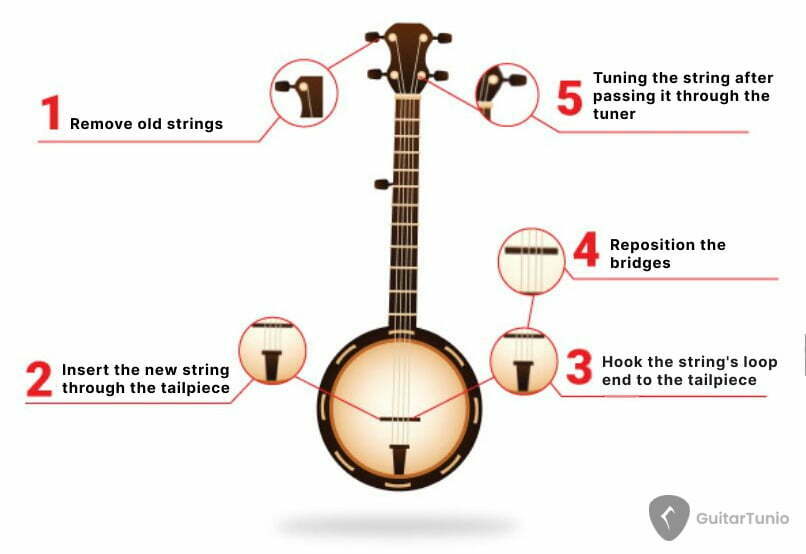Think back to the first time you bought a new banjo and fell in love with it. But over time, the sound gradually lost its clarity. How often a banjo player should change their strings is one of the most frequently asked topics we get. It depends on how much you play. But when it feels rough or dirty when you slide your fingers over the string, it is time to change your string. Beginners who want to learn how to string a banjo will find this article to be helpful. In this article, we will guide you on how to restring a banjo.
Preparation
Before you begin to change the strings on your banjo, you need to prepare a few tools:
- A new set of strings
- Wire cutters
- A pencil
- A string winder (optional)
- A banjo tuner (optional)
- A soft cloth
How to change the strings on a banjo
After gathering the tools mentioned above, you can follow these steps to replace your banjo strings.

Step 1: Remove old strings
Start turning the peg to loosen the string. Work from the thickest to thinnest.
Step 2: Insert the new string through the tailpiece
Insert the new string into the string holder. You can fix this by putting a pencil into the loop or an equivalent device if the loop is too small or bent wrongly
Step 3: Hook the string’s loop end to the tailpiece
Attach the string’s end to the string holder’s hook. To prevent the loop from coming off the hook, gently pull the string in the direction of the fingerboard.
Step 4: Reposition the bridges
When the strings are taken off a banjo, the bridges may also come off because they are frequently not attached tightly. The sound of the banjo can be impacted by the bridge’s placement. Therefore, it’s crucial to check that the bridge is level before changing the strings.
Step 5: Start tuning the string after passing it through the tuner
The string is tightened by placing the other end of the string inside the tuning fork and rotating it. To prevent tearing, avoid pulling it too tightly. If the string needs to be adjusted again, you can trim off the extra length but do not do so too quickly. Once you’ve finished with the first string, replace the remaining strings using the same procedure.
A Few Banjo Setup Tips
- Cut the end of each string at the tuner peg with scissors, leaving about a 1/4-inch length of the string.
- Use our banjo tuner app – Guitar Tunio (available on App Store and Google Play) or a similar device when tuning to ensure you tune the banjo correctly.

Conclusion
In conclusion, changing the strings on a banjo should be an easy and quick task with practice. By following these steps, you can keep your banjo sounding sweet and playing well. Good luck!
